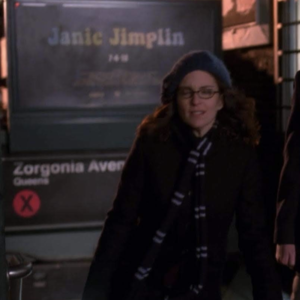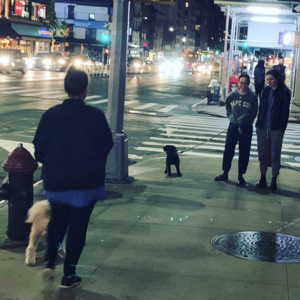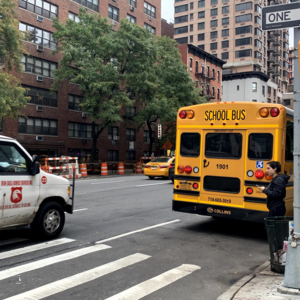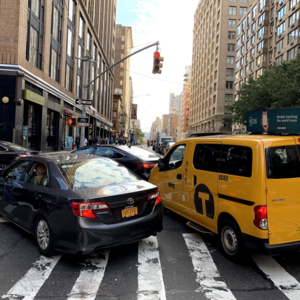Half of the things you buy were delivered on an illegal truck.
Did you know that virtually every 53-foot truck trailer you see in the city of New York is operating illegally and subject to impound? The law says these trucks may not operate anywhere in the city, other than on through routes (mostly interstate highways), with very rare exceptions.
We’d understand if you don’t know what we’re talking about, since to our knowledge not a single NYPD precinct has enforced the law against a single illegal truck in the past year.* There are something like five hundred illegal trucks on the streets of New York City right this minute. Illegal trucks deliver every day to Dunkin, to Duane Reade, to Starbucks in all five boroughs. Illegal trucks are registered to businesses in Brooklyn and Queens and parked on the street.
*We pay attention to this stuff. We’ve seen the state police occasionally writing up oversized trucks at toll crossing entrances. We’ve heard rumors that the NYPD Highway Patrol has conducted occasional enforcement. But we’ve never, ever, ever heard of enforcement by a precinct.
What the law says: With rare exceptions, all trucks longer than 55 feet are illegal.




The New York City Traffic Law says the following:
- Tractor-trailers longer than 55 feet, from nose to tail, are illegal on all New York City streets. This means all 53-foot trailers, and all 48-foot trailers pulled by tractors longer than 7 feet, are illegal. (Also, tandem trailers are illegal.)
- There are two exceptions enumerated in the law:
- To accommodate long-distance traffic, 53-foot trailers may be driven on Interstate highways and a couple of through routes on Staten Island. They may not drive (or stop, park, load, etc.) on any other road or street.
- Trucks longer than 55 feet that are carrying indivisible loads may apply for day permits from the DOT, that specify the exact route they may take to and from their destination in New York City. “Indivisible loads” means girders, beams, items of physical infrastructure. “A bunch of pallets of potato chips” doesn’t qualify.
- That’s it. If you’re not in one of those two situations, you’re illegal.
These regulations are for our safety! A 65-foot truck isn’t suited for New York City streets; even outside Manhattan, it’s liable to get stuck, crushing street furniture or other vehicles (or people), as it attempts to make an impossible turn.
What actually happens: Illegal trucks are driving around your neighborhood right now.




When the police don’t enforce the law, nobody obeys it. And that’s the situation we’re living with right now. God only knows why a company based in New York City would register trucks that are illegal to operate in New York City and use them for deliveries in New York City; meet Bartlett Dairy, which delivers to NYC Starbucks locations nightly. Dunkin uses illegal trucks; Walgreens uses illegal trucks; Trader Joe’s uses illegal trucks, as far as we can tell.
And, of course, in industrial neighborhoods, and along through routes to expressways (like in Astoria and College Point), illegal trucks are everywhere. They park overnight in your neighborhood. They drive past your children’s school. They’re going to kill someone.
Note that there are no exceptions in the Traffic Law for:
- Oversized TV and film production vehicles. If they’re on the streets of New York City, they need a day permit. The Mayor’s Office of Media says it’s not their problem. Do you believe that every one of those illegal trucks has an individual day permit outlining its route? We don’t.
- The dozens of oversized trucks delivering every week to the Javits Center. What are they delivering, a full-scale replica of Mount Rushmore?
- Oversized delivery trucks registered to New York City addresses. In New York City, it’s illegal to use a 53-foot trailer to make deliveries of items that would fit on a smaller truck. There are no exceptions.
- Oversized trucks operated by the US Postal Service. The NYPD and State Police won’t get involved, which makes them even more dangerous than other operators’ trucks.


